Episode #402: Why District Math Plans Fall Flat Without School-Level Action
LISTEN NOW HERE…
WATCH NOW…
Too often, district math improvement planning happens “up there,” with big visions and system-wide goals that don’t trickle down into meaningful change at the school level. In this episode, we make the case for flipping that script.
We unpack why implementing the roadmap to district improvement at the school level—early and intentionally—is key to achieving system-wide math goals. If schools are ultimately responsible for meeting those goals, they need access to the tools, vision, and clarity now. The greatest impact will come from what happens inside classrooms, not in central office documents.
Tune in to hear why alignment across both systems—district and school—isn’t just helpful; it’s essential.
In this episode, you’ll discover:
- Why system-wide math improvement depends on strong school-level implementation
- The danger of waiting too long to bring the roadmap into schools
- How school-level teams can lead the work in alignment with district objectives
- Why district math goals must be more than vision statements—they must drive daily decisions
- Where the real leverage lies: inside classrooms and schools
Attention District Math Leaders:
Not sure what matters most when designing math improvement plans? Take this assessment and get a free customized report: https://makemathmoments.com/grow/
Ready to design your math improvement plan with guidance, support and using structure? Learn how to follow our 4 stage process. https://growyourmathprogram.com
Looking to supplement your curriculum with problem based lessons and units? Make Math Moments Problem Based Lessons & Units
Be Our Next Podcast Guest!
Join as an Interview Guest or on a Mentoring Moment Call
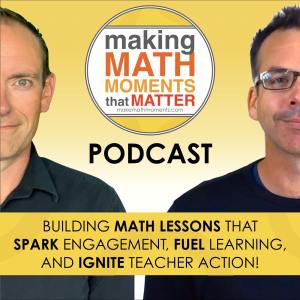
Apply to be a Featured Interview Guest
Book a Mentoring Moment Coaching Call
Are You an Official Math Moment Maker?
FULL TRANSCRIPT
Jon Orr: All right, in this episode, we are going to unpack, I guess, a really important mathematics leadership issue that we’re seeing across different districts, different schools that we’re supporting. This is what we try to do on these Thursday released episodes is take some of the learning that we’re doing when we meet with many, many schools across North America and the school districts across North America and the support that we’re providing them and bring those issues to you.
you know, bring the big ideas to you. So this, you know, this question today is really about like, why sometimes our math plans are falling flat and what we can be doing to that. And I guess it stems mostly from what we’re seeing is, it’s kind of, kind of happening when we’re thinking about working with not just schools, but at school districts and district levels. So.
So here in Ontario, we call them school boards, across North America. Generally, they’re called school districts. And a lot of centralized planning is happening at the school district level. our math coordinators, our math coaches maybe, there are assistant superintendents who are in charge of mathematics. We’re trying to plan for support. We’re trying to make impact in our classrooms. And there’s a lot of decisions being made at that district level about what math support should be looking like.
I guess what we’re seeing is that sometimes they stay up there. The work is staying at the district level and we know from impact and from seeing success in schools and school districts that that work has to trickle. That work has to trickle down to the school level. Otherwise the impact actually doesn’t take root and it’s not going to be as sustainable as you want it to be.
That’s what we want to talk about here is how do we do that? Like how, how do we move quickly from, you know, being here, I’m trying to coordinate really important work at my district level, but down to the school. let’s dig in.
Yvette Lehman: You actually recently shared with me and I use this example all the time, of a time when here in Ontario, we did this really well. And it was at the release of Growing Success when we were all being introduced to learning goals and success criteria and the triangulated approach to. Right. Yes, seriously, I think it was 2010 that the document was released. But I remember you saying that the reason…
Jon Orr: Okay. That was 15 years ago. Growing success. Yeah, right.
Yvette Lehman: I think that that rollout was so impactful is because there was alignment from the ministry to the district to the school. And we all knew that year that we were focusing on assessment and that we were focusing on the implementation of learning goals and success criteria. We did book talks around John Hattie’s, know, understanding of the importance of metacognition. We put students in the position of
ownership and we said we need transparency for all stakeholders. We need students to know what they’re working toward and what success looks like. And it was almost like this all hands on deck approach that infiltrated staff meetings, PLCs, conversations in hallways, district walkthroughs, principal walkthroughs, and we all had a common understanding of what we were aspiring to.
Jon Orr: 100 % and it lived at the school level. Like you heard about it because there’s a ministry document. So this is in all Ontario, all schools, know, elementary, secondary. know, this document became policy, but at no time did it feel like this is a ministry, even if was a ministry, a ministry kind of, I guess I don’t like using the word initiative, but I’m gonna use it because it’s.
it describes it, an ministry initiative, but it was a shift that we all needed to be making because of research, because of practice, because of what was happening here in Ontario around assessment. that, to us teachers felt like it completely lived at the school level because what you just said, it dominated our staff meetings. know, principals were owning the work that was happening at their school level because it was, it was shared across.
across all these districts. So at the district level, which is one step up from the school level and still one step down from the ministry level, it was owned there as well. But then that support was being rolled out from each level down to the school. But that happened very quickly.
Yvette Lehman: Yeah, and I am thinking back on that experience and how quickly the transformation occurred. I can only attribute to the fact that we had alignment and that at the time too, we were able to quiet other competing priorities and we allowed that really important learning to be, you know, at the forefront of every decision that was made that year. I also, you mentioned too, we always talk about this idea that
research suggests we need alignment, but we also need autonomy at the school level. So there was still opportunities within PLCs, within small, you know, collaborative teams to go maybe in different, like not everybody read Hattie’s work that year. Like that was maybe a decision that was made at the school level because somebody identified that this is a book that was going to reinforce our learning around learning goals and success criteria, teacher clarity, student metacognition.
That doesn’t mean that every school was mandated that they had to read Hattie, but we all had a shared objective. And so that’s what we always advocate for, right, is alignment, but with autonomy and that they don’t need to be competing, they can both exist.
Jon Orr: Now, and here’s something else specifically about that example is that that document itself, so the policy, know, growing success is pretty robust. Like there’s a lot going on in that document that covers all subjects, it covers, you know, so many different forms of assessment, but because there was autonomy at the school level, schools were tackling different pieces of that at different times in the school year that was filling or plucking.
the pebbles out of their shoes when they’re trying to unpack a certain thing. So at a school site, one school might have been saying, focusing on like, what do we do if we can’t apply a zero? What does that mean? And high schools are getting, figuring out how do we make sense of that with what we’re currently doing? And that became a major focus for one high school, but maybe not another school. And so there are all these pieces of that large document, because I would say it.
It’s 15 years later and we’re still making strides towards doing more of the practices that were outlined for us 15 years ago. It’s not a, hey, we’re not all there yet, but that is still a push. Like it’s not like, hey, we just did it for three years and we let it go. No, this is still there that we’re trying to make sure that we’re all learning. And I think you use that key term, the learning that has to happen for us to make the shifts at the school level to have autonomy is really essential to having that. let’s back up.
Like why do we want to, like you said alignment is the key here. But where do you feel like the pebble is for some of the districts we’re supporting right now?
Yvette Lehman: think that you’ve actually articulated this in some of our past episodes where we feel that we are missing a key stakeholder. So oftentimes when it’s specifically when it’s a content focus, so it’s just math or just literacy or just social studies, we go right from district office to classroom teacher.
And so the teachers get the PD, right? And we sometimes that’s like a one-off PD, you know, it’s like a pull-out PD. All the social studies teachers are going to come to this PD session and they’re going to get taught best practice around the inquiry approach to social studies.
Jon Orr: Yes, it’s a common question that dominates some of those early discussions we have with our teams and in the districts when we’re working with, say, district levels and even beyond. There are teams that we’re working with that are above the district level, states, ministries of education for different countries. they are immediately, because we all have our understanding of what improvement is supposed to look like.
we naturally will go, well, improvement, we’ve been ingrained that student improvement, who can improve the student the most outside of parental involvement is the classroom teacher. So let’s make sure we get professional development into the hands of the classroom teacher. How do we do that from our ministry level down to our district level, down to our school? And I think what you’re saying is we’re skipping in a way of a component because we’re going right to the classroom teacher, which we do want.
support to be directly towards classroom teachers. But that piece that’s actually missing is what’s happening at the school level with the leadership. It usually ends up being skipped. let’s say you have, let’s say for imagine, imagine at the district level you had enough coaches to go to every single school. And you’re saying let’s work on say this particular strategy and you jump to the school and the classroom, you’re working with teachers, but the principal’s not knowing.
you know, what’s exactly happening. Like we know it is, but the principal’s also been shared or told, you’re like, it’s okay, we got you. We’ve got coaches happening in their classrooms that are gonna be doing this, but you don’t really need to know. But that’s the part that’s the alignment that we’re missing here, is that we need the autonomy to happen at the school level. And a lot of times we’re just planning around it.
Yvette Lehman: Oftentimes when we’re working with districts, one of the questions I always ask is, your schools have math goals? Like do your individual schools have math improvement goals? And the answer is always yes. It’s not always all schools. Sometimes it’s like schools have the choice between a math goal and a literacy goal, but it’s like schools have improvement plans. And I think an area that we need to really, you know, focus on moving forward is do those school improvement plans?
align with the district improvement plans so that we are on the same page and we’re maximizing all of our subsystems to serve the same objectives that we’ve all agreed are important because and this is an example from the literacy world right now we know in literacy that teachers are you know in many districts being taught a structured literacy approach and so there’s a really big
push in Ontario and at the district level that teachers are making significant shifts to their practice. If principals are not included in that work, they might be creating literacy goals that contradict the PD that teachers are receiving, not because they’re malicious or have bad intentions, it’s because they’re basing those literacy goals on the way they were teaching 10 years ago in the classroom and what they know.
And so now imagine you’re the teacher who’s being evaluated for a teacher performance appraisal by the principal, a PLC is being run by the principal, but a coach and district PD that’s giving you a different message.
Jon Orr: 100. Yeah, it’s, it’s a major barrier to seeing the traction that you you’re looking to create based off research based practices, because we just haven’t, we haven’t created the alignment needed there. So like, I would say like, this is the work we’re doing with some of our big districts is, is trying to transition the thing, I’m gonna use that key term, the learning that we all need, specifically to make sure that alignment is part of that learning process.
like the work that we’re doing with those business is going like, yeah, we could do all the work here at the district office. We could coordinate things we could we could plan PD, we could plan the coaches to go out, we could, we could, we could do all this, and it could live here with us at our level. But instead, what we’re trying to do is pass the learning as quickly as we can to the schools and the school leaders. So the combination between the relationship between the coach at the school, if a coach exists, or maybe it’s a math chair.
a lead teacher and the principal themselves to go, we need to create school improvement goals that are appropriate. That education there, we would love to be like, yeah, we could do the objectives. We could do key results here, but actually our key results really should be just saying, how can I support that school in creating appropriate math learning goals and appropriate measures to measure the results that we want? If I can be my key result.
then we have huge wins because you’re not only creating school improvement, but you’re creating this mass system where everyone’s getting the learning they need to create these types of environments for professional development. Because imagine that school and that principal is like, know how to make improvement, I know the pieces that are required, and I actually, we’re picking a goal that I can actually see achieved.
Like I can actually get to see it at the end of the year. We get to the end of the year. We’re like, this goal was achieved because we set it appropriately. Like that’s the learning that we want districts to take is like, let’s focus there and let’s make sure we’re doing that with our leaders so that we can design appropriate structures to support the teachers. And then in years two, three, four, we can start to collaborate and bring some of these focuses back.
and go, you know what, now we’ve crowd sourced what this vision of math should be across the district because we’ve heard all these pieces of stories and we saw evidence from each school and now we’re feeling a lot more aligned and a lot more unified across all schools because we transfer that learning quickly or I guess, I guess I said quickly but I mean what I really mean is like diligently to the schools.
Yvette Lehman: use almost Ontario as like a case study here. So here in Ontario we have three objectives, which is what we often talk about when we work with our district partners. It’s like maximum three, you know, and we talked in our last episode for leaders about like how one of our districts went from three to one because they got real about what they could actually do in the concentrated area of math improvement. But let’s say you have maximum three priorities and in Ontario that’s at the province level, this could be at the district level. Who can name them?
If the only people who can name those priorities are at the central office, that’s a problem. Like we need to make sure that there is shared ownership of these priorities. And like they’re doing here in Ontario, like these are here for the long haul. Like the three priorities that we can basically summarize in Ontario is like, know the curriculum, know the math, know the student. Everybody should be able to state those.
Everybody should be able to see how their school improvement goal aligns to those three priorities. The work that’s happening at the district level should strengthen the school improvement goals and also align to those priorities. And everybody should collectively know that this is the work that we all are working on together over the next five, 10 years to strengthen math, teaching and learning. And that’s the alignment.
It’s like we have shared ownership and we can all clearly communicate the path that we’re taking and where we want to be in the areas that we want to target. But then the autonomy comes into, okay, well, as a school this year, I can’t necessarily tackle all three of these priorities. They’re too big. I have competing priorities. I have other subjects that need time as well.
what’s realistic for me, but I should be able to draw a line between what I’m doing and when my teachers step outside of our school environment to attend any type of centralized professional learning, it should feel like it’s reinforcing what we’re doing at the school level, not working against it or sharing a mixed message.
Jon Orr: 100%. Now, let’s say you are listening to this and you’re a math coordinator, you’re a math coach, and you’re like, yes, I know that that’s important. What is your key recommendation here?
Yvette Lehman: I think we’ve talked about this on another episode about like the stakeholders that we’re missing, which are our school level leaders. I think that that’s often times, whether it’s your formal leaders or informal leaders, that might be your department chairs, anybody who has influence around the teaching and learning of math within the building needs to be brought into the conversation quickly. And that’s like, we use that word again quickly, but it’s like, otherwise.
It takes a very long time for the transfer to happen. So if as a district, you are in the process of establishing your objectives, okay, so you’re starting to narrow the focus. You’re starting to say, these are the areas that we are going to focus on for the next three to five years. You need to be getting stakeholder input around those objectives quickly. So that means once the central team has identified them, or maybe they’ve been identified by the state or the province, how are we bringing leaders into that conversation?
very early in this process to ensure that shared ownership. How are we structuring supports that when principals are writing their school improvement plans, we are ensuring that they are aligning to those three focus zones that have been identified or two focus zones or that one focus zone. Like what is the system for feedback and support to ensure that before that school improvement plan is communicated to staff.
they’ve received feedback from somebody at the central office team to ensure that that alignment is there without robbing the school of their autonomy and the work that they have identified as being important.
Jon Orr: Yeah, like you said it before, it’s missing voices and we’ve often just overlooked this key voice, this key, this key, you know, linchpin that can actually make a difference. I was saying this when we were working with principals and the math coordinators just recently for some travel that we had done that, you know, they were targeting teachers in support and I said, imagine.
Imagine for a moment that you had a plan around how to support your administrators in the same work you’re trying to do here to help them with goals, but also help them with what does math class look like? What are some of the key components of our look for document? How are we making sure that our administrators know what not only our objectives are, but also how to identify, how are they creating their own goals? Because I said imagine for a moment that if that
Like you did a bunch of stuff to help a principles kind of step into this ring, step into this like ownership. Because if you imagine the other the other way is like we don’t have enough coaches to do this work at the schools. But imagine you had a principal who owned this work work that work is done at that school.
You know, the principal’s gonna own the professional development of that school. They’re aligned to the work that you wanna be seeing across the entire district, the work that you get to bring, you know, your expertise, the research you’ve done, the learning that you’ve done. You know, we often say, we’re at a silo, and we just wish you could replicate more of yourself. Well, transfer that learning into people who also have influence. If you can do that,
and you’ve all a sudden got a bright spot principal owning this work, then you don’t have to have a coach at that building as much anymore because the principal is designing the PLCs to be appropriate and aligned to the work. know, any sort of work that they do have a school level coach, instructional coach that might not be, say, reporting to the district office, but reporting to the school. Now we get to structure the time there to hit those goals. Like, you got more leverage that way. instead of saying like, we’re gonna skip that person and go right to the classroom.
Yvette Lehman: I just had a thought, John, that’s actually for us, know, feedback for the work that we do, which is I think that all of this work is really important and we need to empower our school level leadership teams. We need to make sure. But then there does need to be some direction from the top. And like my superintendent used to call this like the sandbox. Like we need to define the sandbox because if we don’t have enough alignment or enough direction,
Everyone’s now running in different places. It’s impossible for the central team to design professional development that’s gonna align to all these different objectives that different schools are tackling. So it’s like doing that work as the district, which is what we do, right? Establish your vision, identify the focus zones. Now from that vision and from these identified focus zones, you’re going to establish your school level goal that aligns, but also respects the autonomy and the culture of your building.
but we should be able to see, draw this through line all the way down to the classroom. And everybody should be able to say the vision we’re aspiring to and the three areas, two areas, one area that we’re collectively working towards strengthening.
Jon Orr: That’s right. Yeah, and that’s like, that’s our role at say, if we’re sitting at our in our district office, not say is sitting because you’re not sitting or you’re moving around, you know, you’re you have so many tasks on your hands, but that that is some of the primary work that you get to bring the expertise to those those those key individuals, because they don’t have the time to go to math conferences, they don’t have time to do the math reading that you’re doing. Take help formula, give them the sandbox.
that you’ve done all the learning around, but then help them understand the components that they have control over to develop their own little sandboxes. that would be, say if you had to do anything, you know, this year and you’re at a, you’re a district math coordinator, you’re saying, what can I do to help support individual schools use the time that they have to be, you know, as impactful as possible, which means I need to be targeting support.
for administrators and how can I also bring on the support of my supervisors to allow us to do that? Because we need their support as well to tap principles on the shoulder to say we need to be moving this way. We need to be supporting you this way and we need to actually have the support but also the pressure to allow that support to happen. So those are some I think big ah-has that we’ve had.
you know, over the last few years to say where some support really needs, I guess where some support has been missing to create some of the traction. If you want to dig in a little bit more, we’ve got two different resources for you to dig in with. One, you can head on over to makemathmoments.com forward slash report and you can fill out in your assessment to talk about the six key areas of a math class or but at the district level. So this is for math coordinators to fill out that assessment.
math coaches, math coordinators, it’s gonna pinpoint which of the six areas you might wanna be focusing on. But also, we have some space in our calendars right now. If you’re listening to this, you can head on over to makemathmoments.com forward slash district and you can book a call with our team and we can be unpacking, say what does your math program look like right now? What are some of the plans that you have coming up? Where are the pieces that you’re supporting?
we can on that call talk about some key next steps for you so you can walk away and have a clearer understanding but also feel like you’re on the right path. So head on over to makemathmoments.com forward slash district to book that call.
Thanks For Listening
- Book a Math Mentoring Moment
- Apply to be a Featured Interview Guest
- Leave a note in the comment section below.
- Share this show on Twitter, or Facebook.
To help out the show:
- Leave an honest review on iTunes. Your ratings and reviews really help and we read each one.
- Subscribe on iTunes, Google Play, and Spotify.
DOWNLOAD THE 3 ACT MATH TASK TIP SHEET SO THEY RUN WITHOUT A HITCH!
Download the 2-page printable 3 Act Math Tip Sheet to ensure that you have the best start to your journey using 3 Act math Tasks to spark curiosity and fuel sense making in your math classroom!
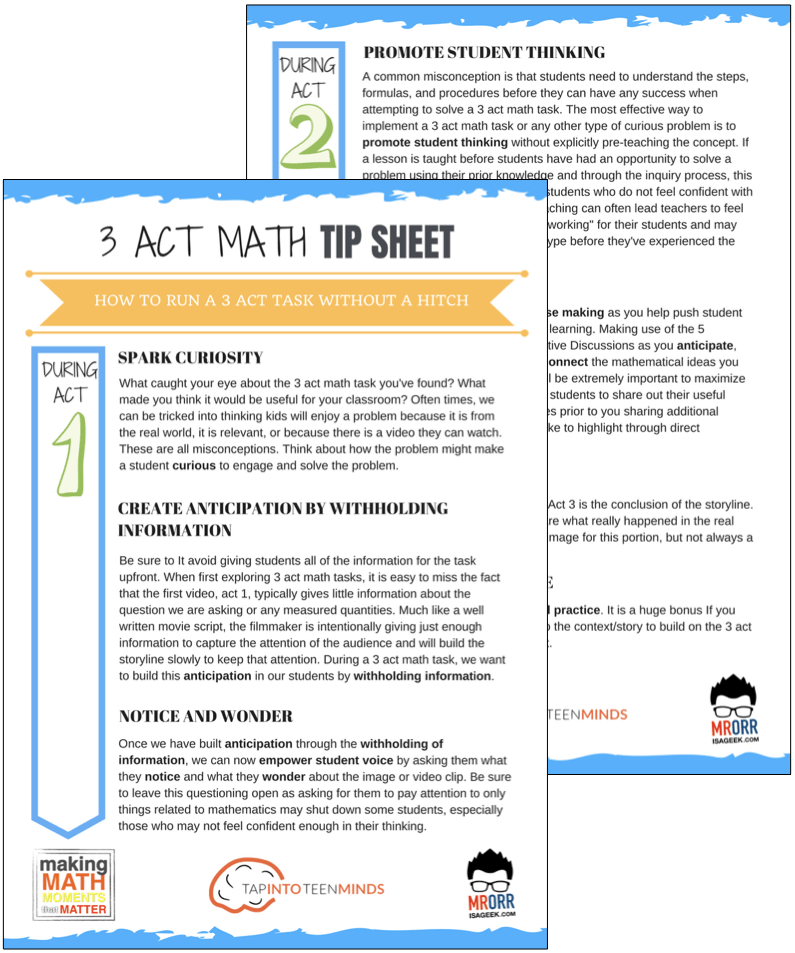
LESSONS TO MAKE MATH MOMENTS
Each lesson consists of:
Each Make Math Moments Problem Based Lesson consists of a Teacher Guide to lead you step-by-step through the planning process to ensure your lesson runs without a hitch!
Each Teacher Guide consists of:
- Intentionality of the lesson;
- A step-by-step walk through of each phase of the lesson;
- Visuals, animations, and videos unpacking big ideas, strategies, and models we intend to emerge during the lesson;
- Sample student approaches to assist in anticipating what your students might do;
- Resources and downloads including Keynote, Powerpoint, Media Files, and Teacher Guide printable PDF; and,
- Much more!
Each Make Math Moments Problem Based Lesson begins with a story, visual, video, or other method to Spark Curiosity through context.
Students will often Notice and Wonder before making an estimate to draw them in and invest in the problem.
After student voice has been heard and acknowledged, we will set students off on a Productive Struggle via a prompt related to the Spark context.
These prompts are given each lesson with the following conditions:
- No calculators are to be used; and,
- Students are to focus on how they can convince their math community that their solution is valid.
Students are left to engage in a productive struggle as the facilitator circulates to observe and engage in conversation as a means of assessing formatively.
The facilitator is instructed through the Teacher Guide on what specific strategies and models could be used to make connections and consolidate the learning from the lesson.
Often times, animations and walk through videos are provided in the Teacher Guide to assist with planning and delivering the consolidation.
A review image, video, or animation is provided as a conclusion to the task from the lesson.
While this might feel like a natural ending to the context students have been exploring, it is just the beginning as we look to leverage this context via extensions and additional lessons to dig deeper.
At the end of each lesson, consolidation prompts and/or extensions are crafted for students to purposefully practice and demonstrate their current understanding.
Facilitators are encouraged to collect these consolidation prompts as a means to engage in the assessment process and inform next moves for instruction.
In multi-day units of study, Math Talks are crafted to help build on the thinking from the previous day and build towards the next step in the developmental progression of the concept(s) we are exploring.
Each Math Talk is constructed as a string of related problems that build with intentionality to emerge specific big ideas, strategies, and mathematical models.
Make Math Moments Problem Based Lessons and Day 1 Teacher Guides are openly available for you to leverage and use with your students without becoming a Make Math Moments Academy Member.
Use our OPEN ACCESS multi-day problem based units!
Make Math Moments Problem Based Lessons and Day 1 Teacher Guides are openly available for you to leverage and use with your students without becoming a Make Math Moments Academy Member.
Partitive Division Resulting in a Fraction
Equivalence and Algebraic Substitution
Represent Categorical Data & Explore Mean
Downloadable resources including blackline masters, handouts, printable Tips Sheets, slide shows, and media files do require a Make Math Moments Academy Membership.
ONLINE WORKSHOP REGISTRATION
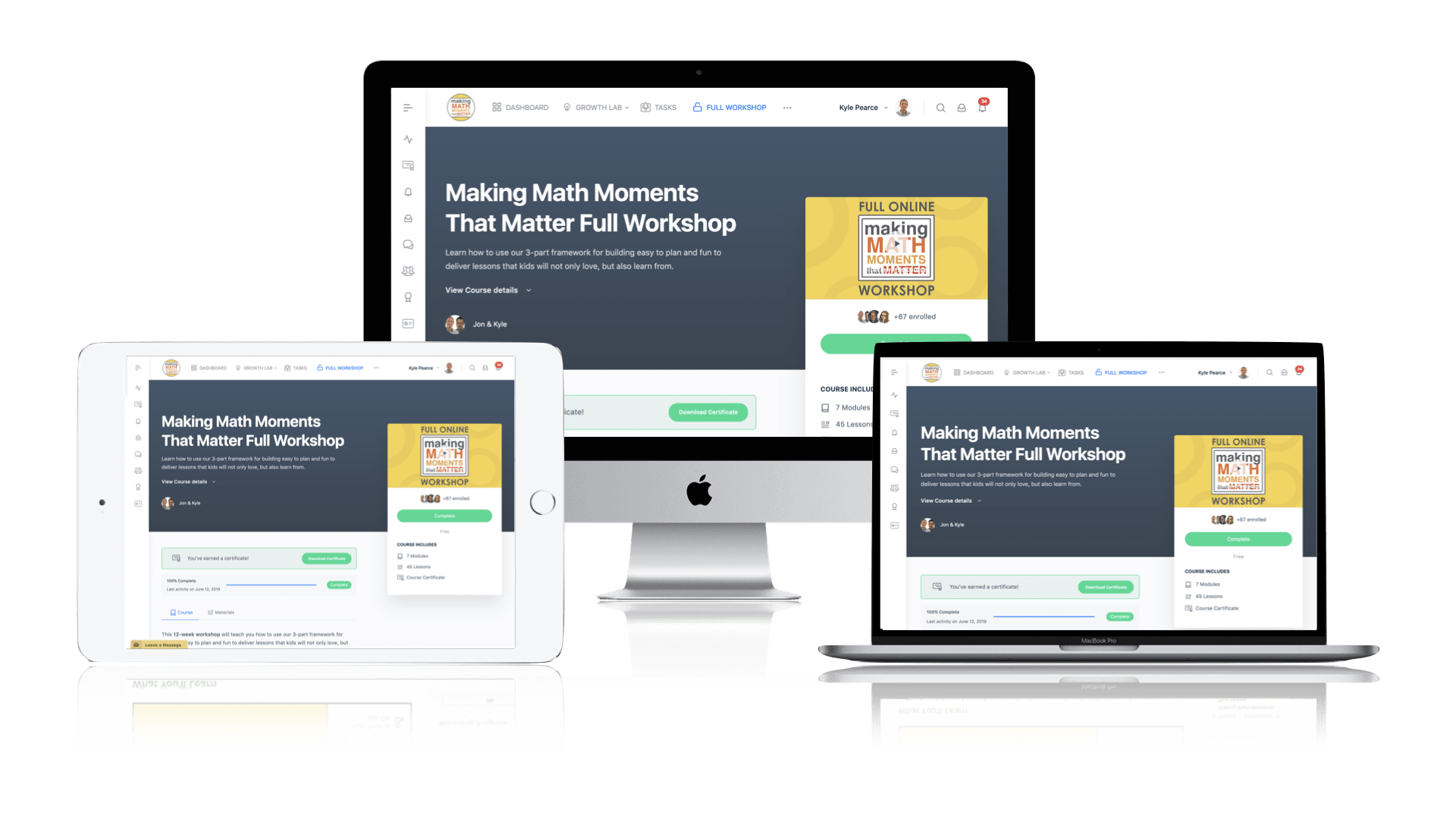
Pedagogically aligned for teachers of K through Grade 12 with content specific examples from Grades 3 through Grade 10.
In our self-paced, 12-week Online Workshop, you'll learn how to craft new and transform your current lessons to Spark Curiosity, Fuel Sense Making, and Ignite Your Teacher Moves to promote resilient problem solvers.
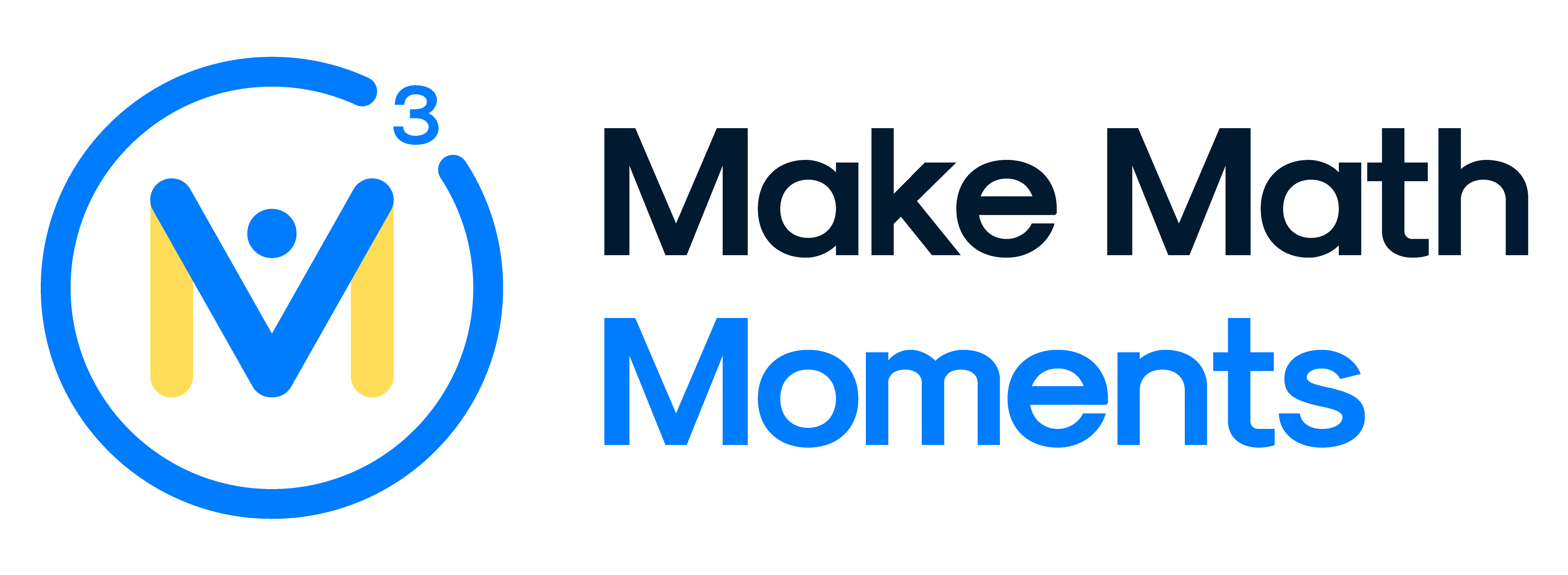



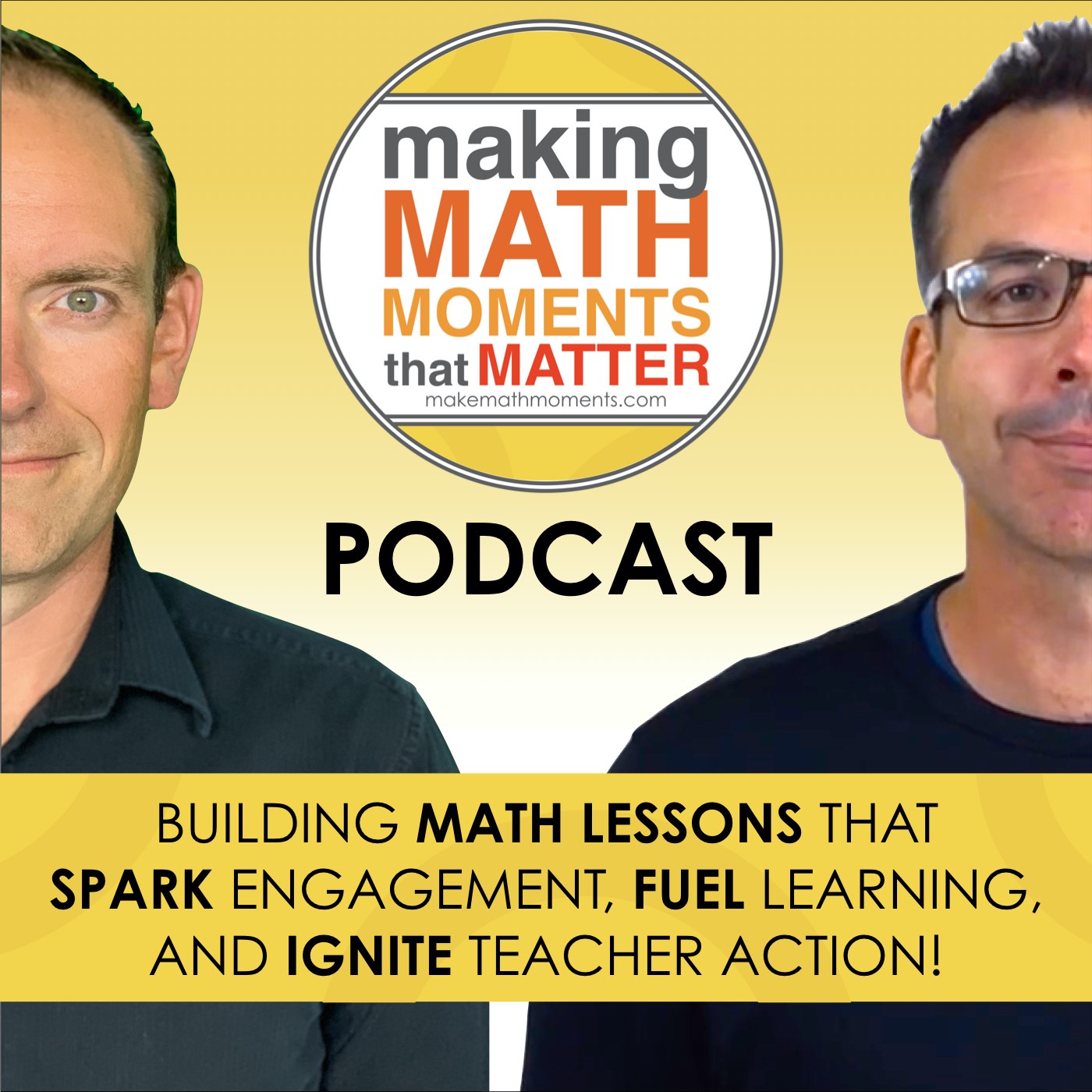
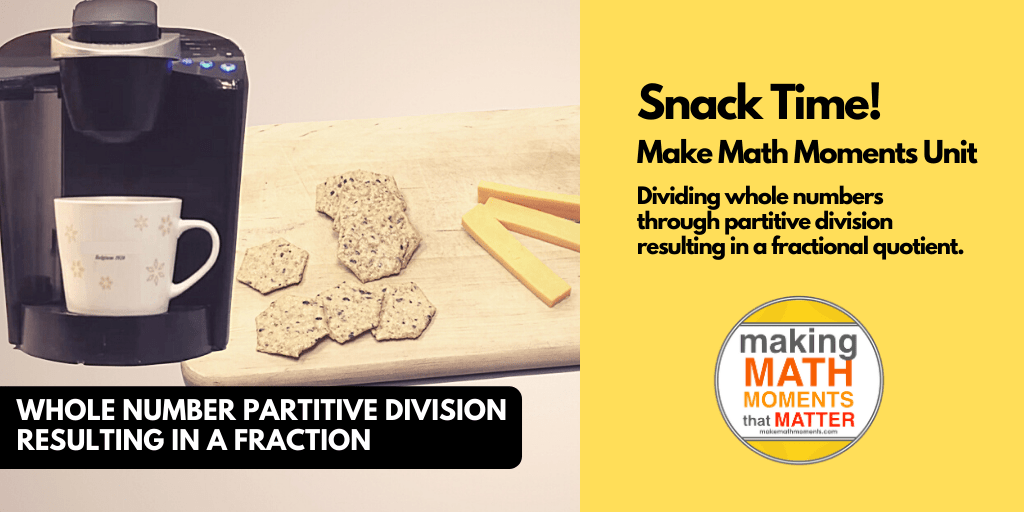

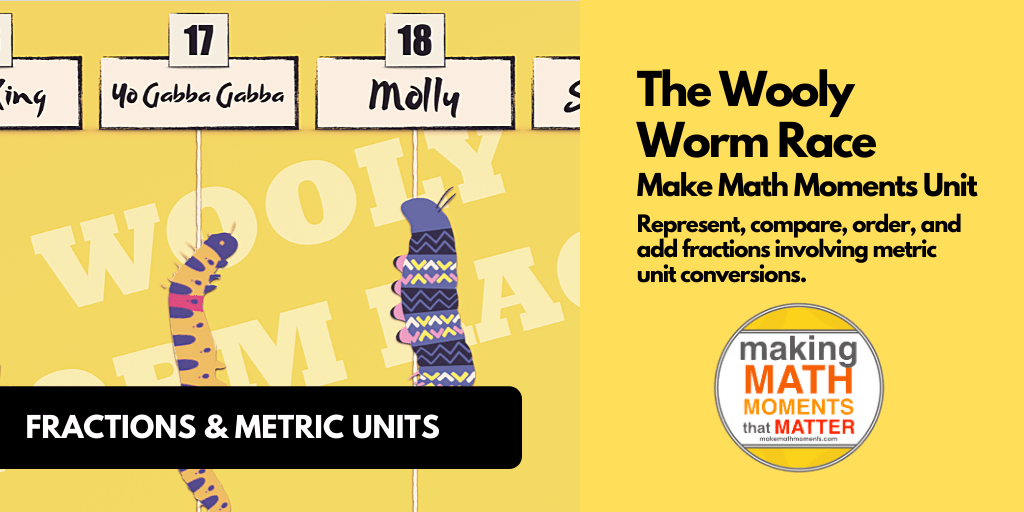
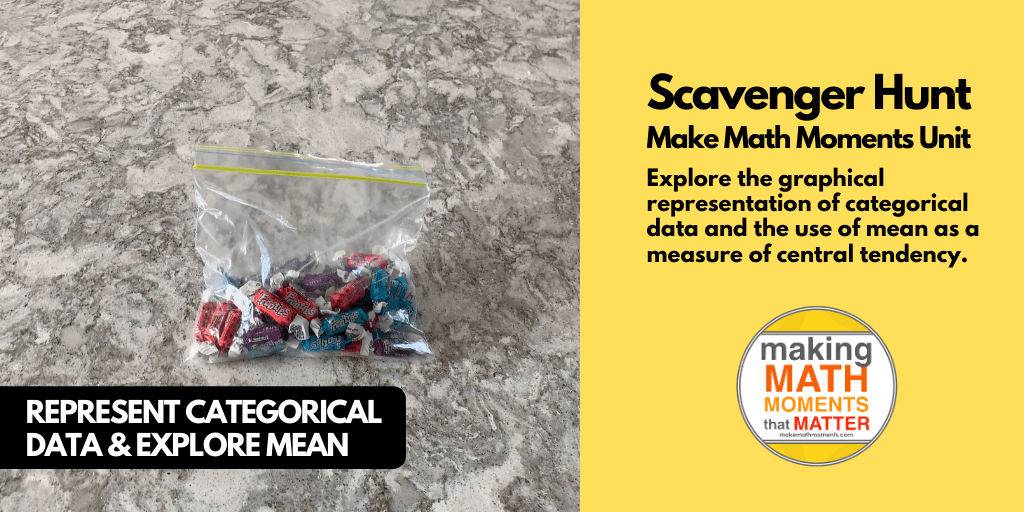
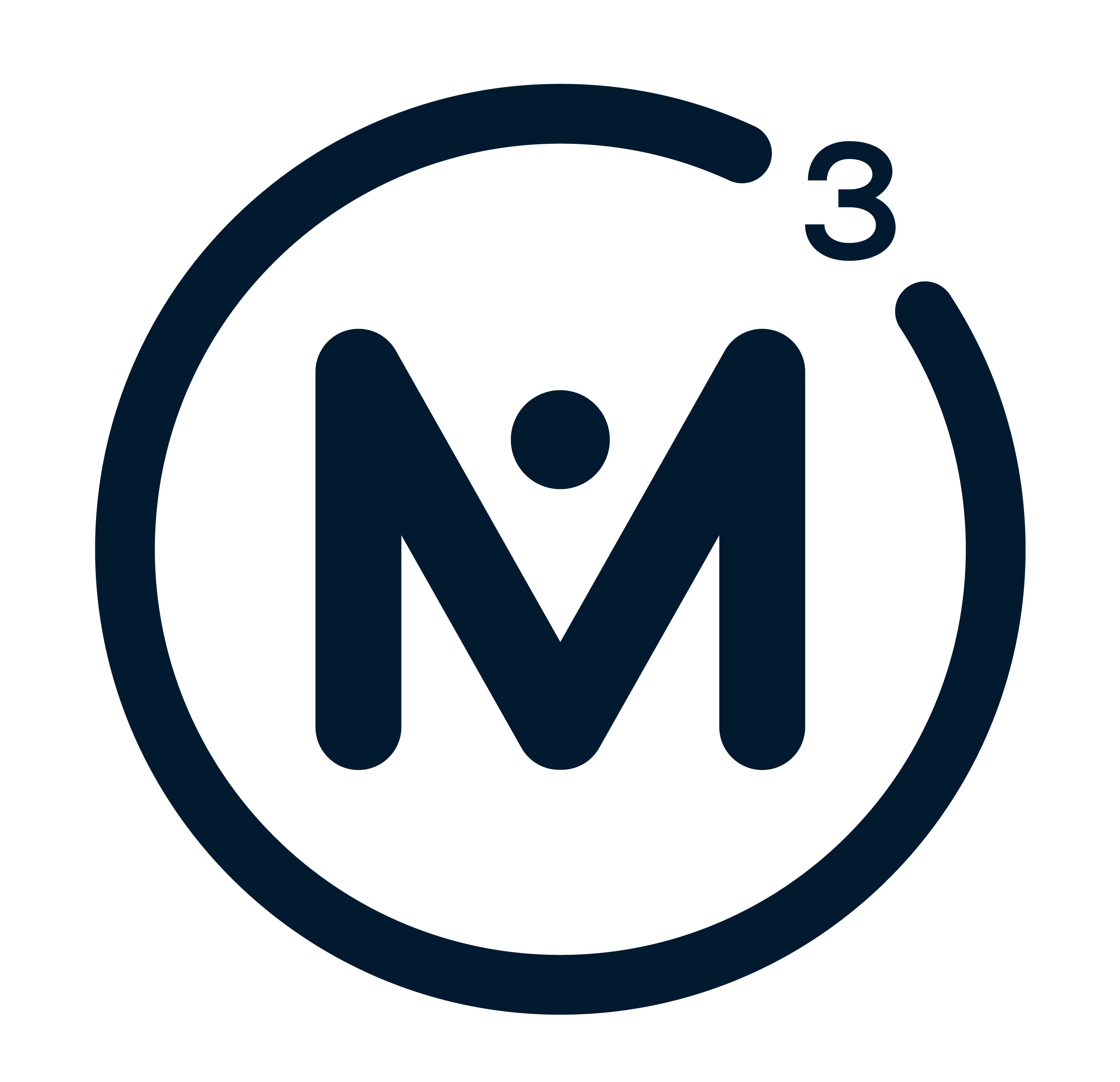
0 Comments